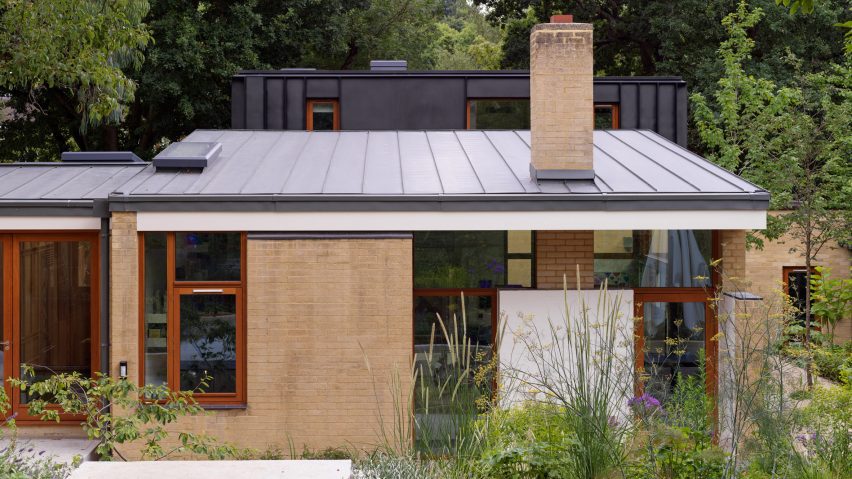
Coppin Dockray turns mid-century Hampstead House into contemporary family home
A mid-century house originally designed by British architect Trevor Dannatt has undergone a sensitive restoration by architecture studio Coppin Dockray in north London.
Named Hampstead House, the 1960s home has been overhauled by Coppin Dockray to transform it into a spacious and thermally-efficient residence suited to the needs of its owners' growing family.
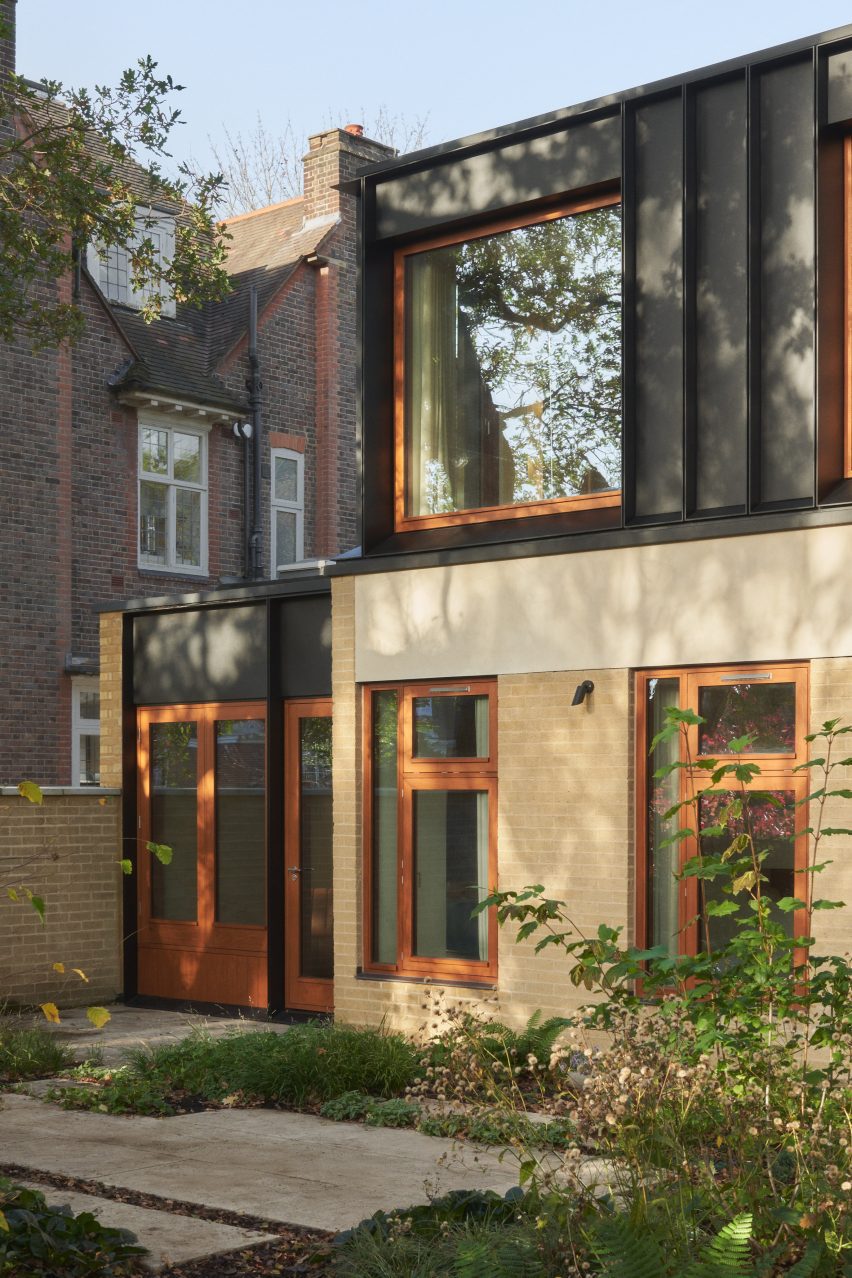
Hampstead House is a British interpretation of a Californian experimental Case Study House and was originally designed to have an intimate relationship with its low-lying, north-facing site in Hampstead.
It is one of the few private houses by the late architect Dannatt, who is best known for his work on the Royal Festival Hall, where he detailed the numerous staircases and glazed screens of the foyers.
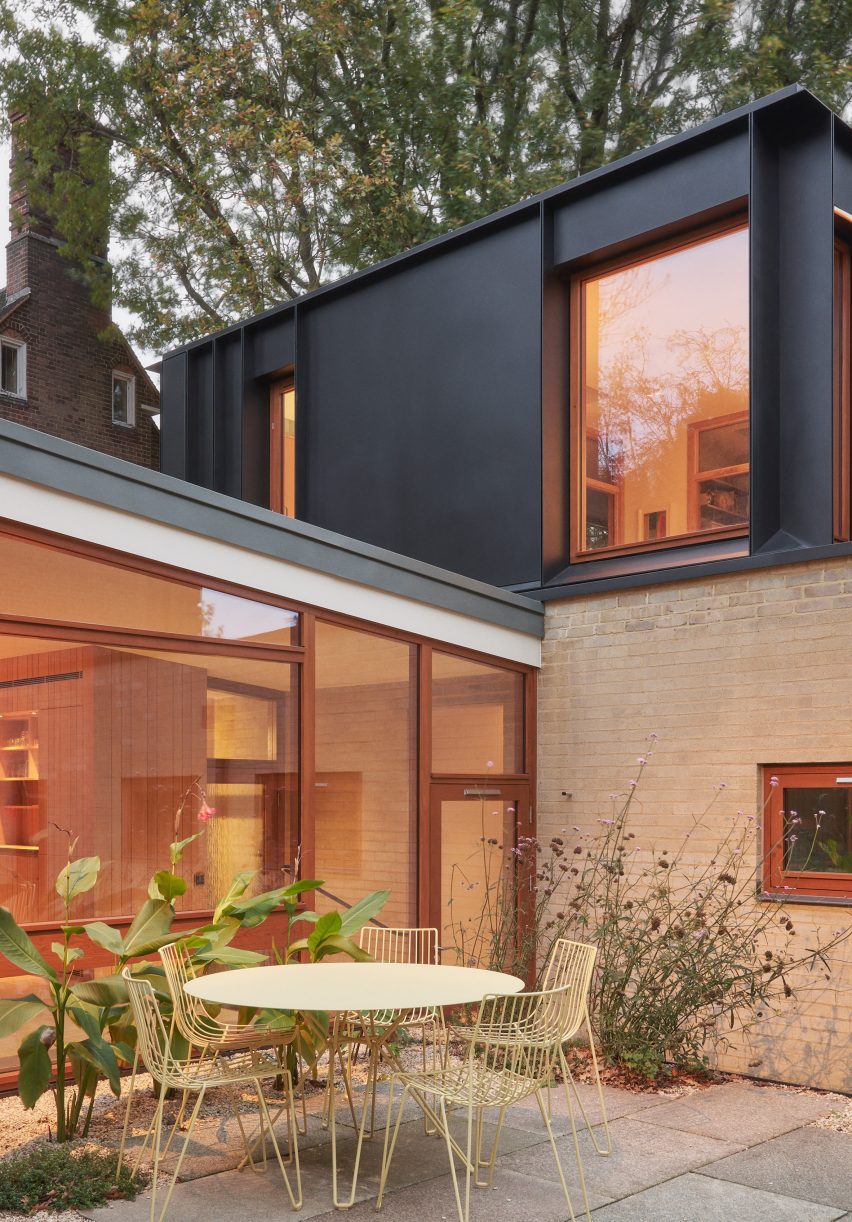
Surrounded by grand Edwardian villas, the home follows the levels across the site to form a series of courtyards and roofscapes surrounded by a verdant garden.
However, over the years it had been poorly extended and developed significant structural issues, with its original elements obscured by a wild and unruly garden.
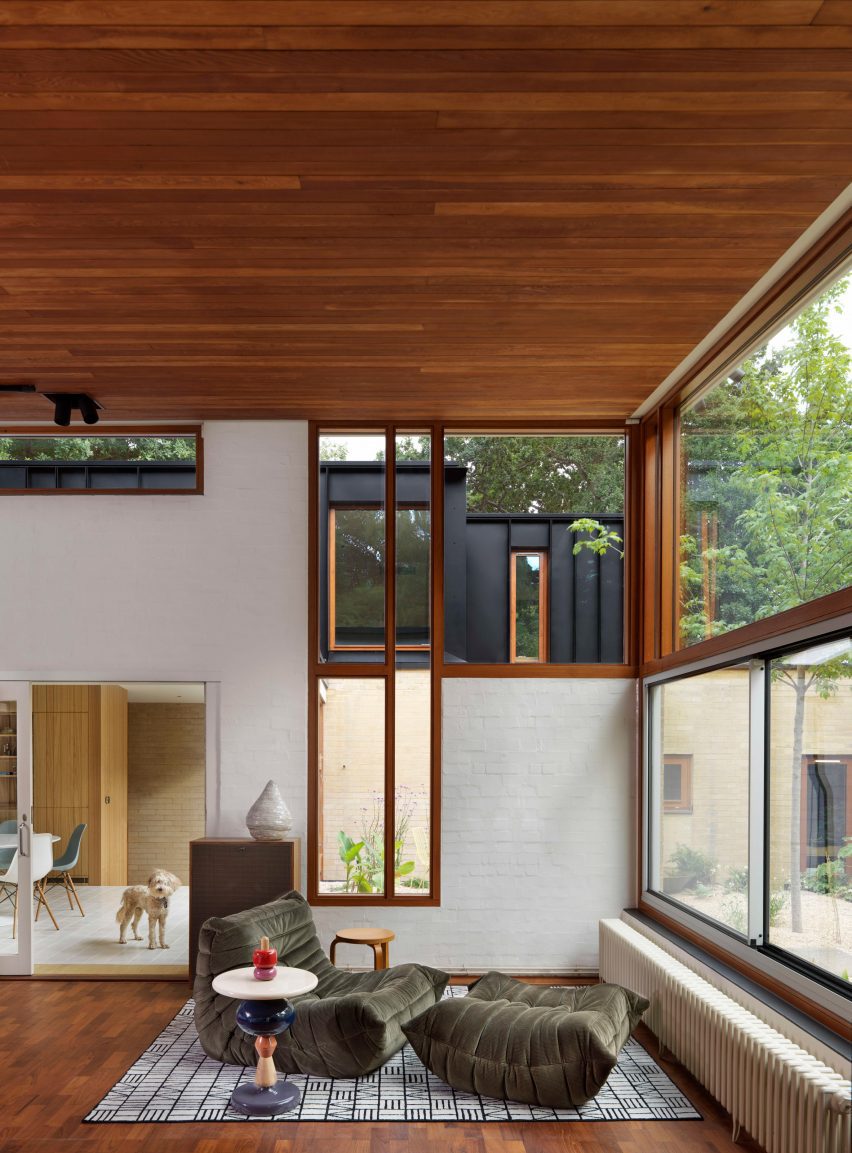
Coppin Dockray's ambition for its overhaul was to rationalise these alterations and reflect Dannatt's original vision – though it was not possible to restore his design in full.
"It was barely insulated, the roof was failing," the studio's co-founder Sandra Coppin told Dezeen. "Post-war buildings are notoriously flimsy and thermally volatile."
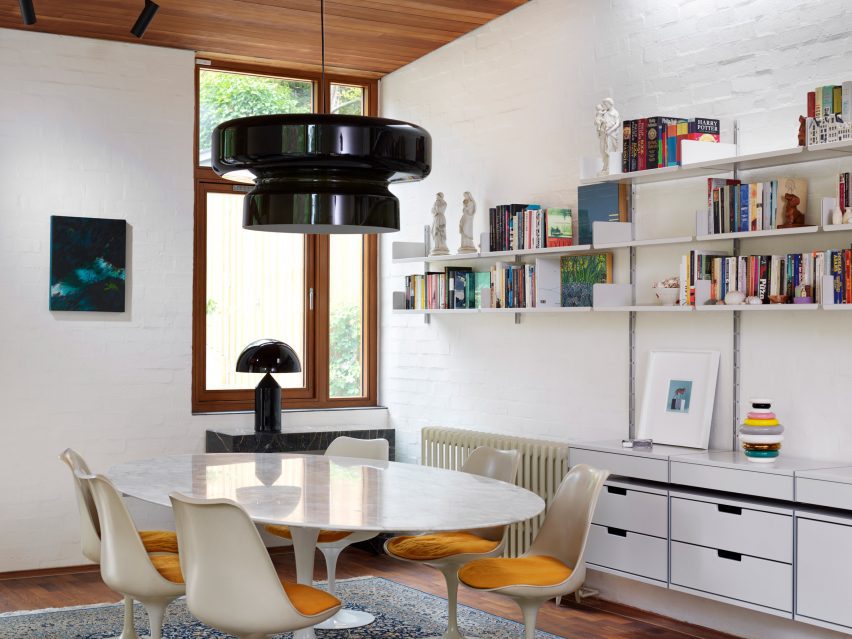
Coppin Dockray had a threefold approach to its proposal. It first identified key aspects of the house that were important to retain, such as the spatial sequence and material qualities of the building.
It then created a larger home suited to its client's needs by sensitively extending the house with clearly expressed additions. Finally, it aimed to significantly improve the building's thermal comfort and energy performance.
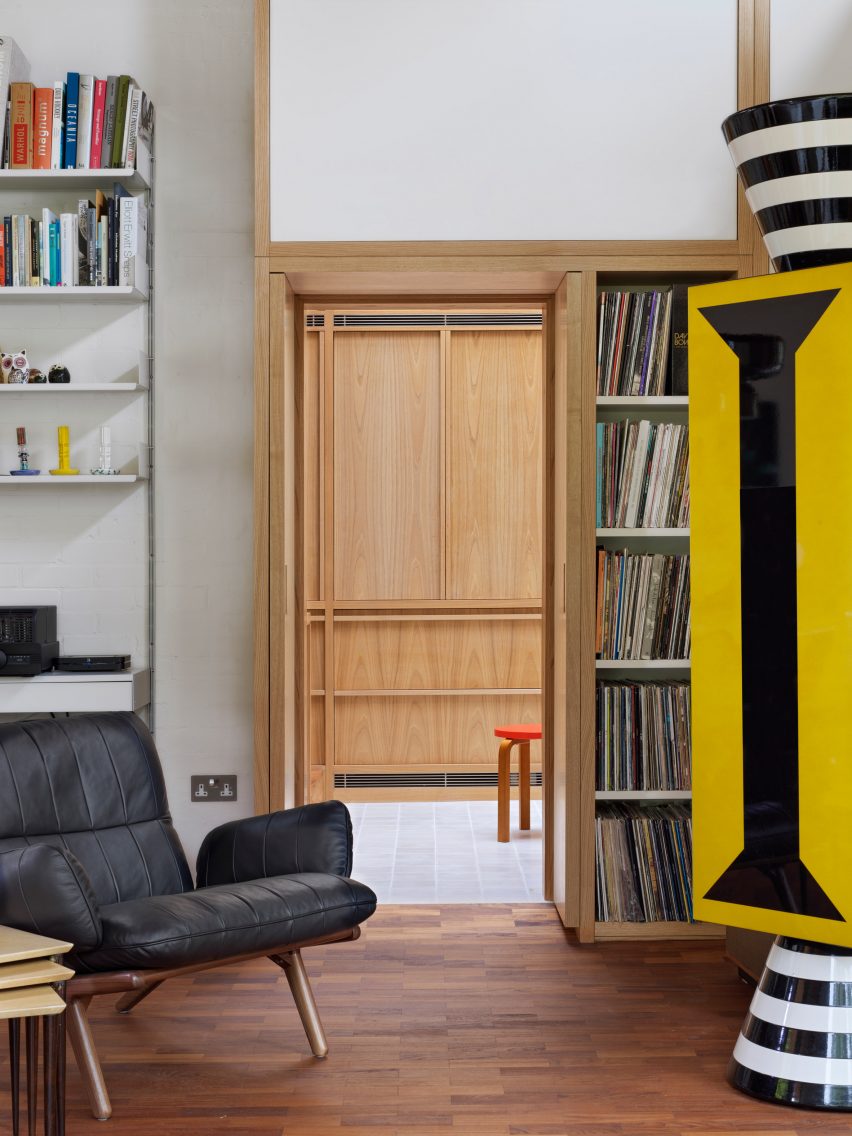
The 1980s mansard has been replaced by a new first floor with additional bedrooms and a study, while the ground floor extensions have been rationalised to reinforce the kitchen's role as the heart of the house.
The studio was careful to limit the material choices, teaming the existing brickwork with black aluminium panels on the facade.
Hampstead House's floor plan is split into two wings hinging off a glazed entryway. The larger public-facing wing contains a dining room and kitchen, which is framed with bespoke sweet-chestnut joinery and a baffle below a large roof light.
Beyond it is an expansive living room, bathed in light from three sides by extensive glazing. It is flanked by a terrace and courtyard, giving views into the newly landscaped garden.
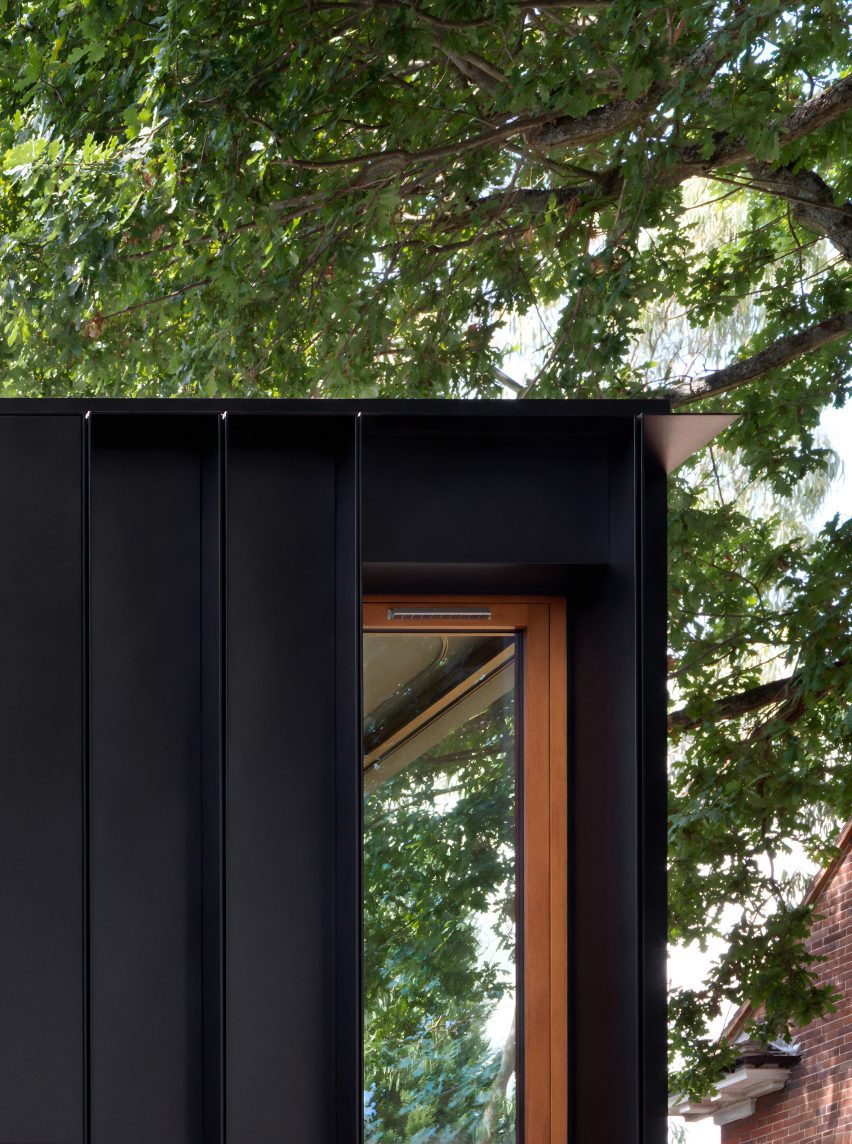
Coppin Dockray was also responsible for updating the home's interior design, sourcing a combination of vintage, bespoke and new furniture and fittings for a "domestic, lived-in" feel.
Improving the building's thermal performance was another priority. The existing building was upgraded with new timber-framed windows, as well as insulated roofs, floors, and walls.
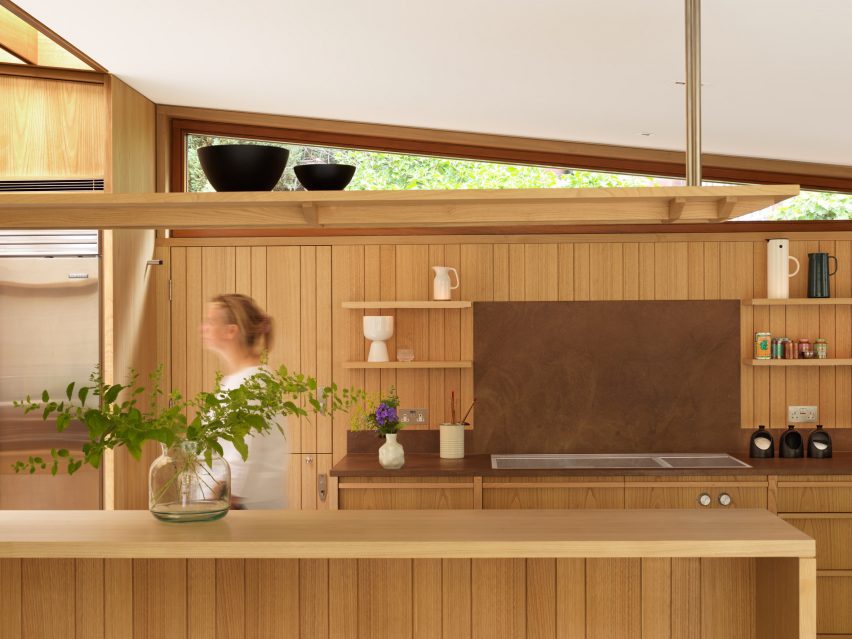
"Each intervention considered the careful balance between the building's character and form and its urgent need for improved energy performance and comfort," said Coppin.
According to the studio, the result of these interventions has brought about a 59 per cent reduction in the building's annual carbon dioxide emissions.
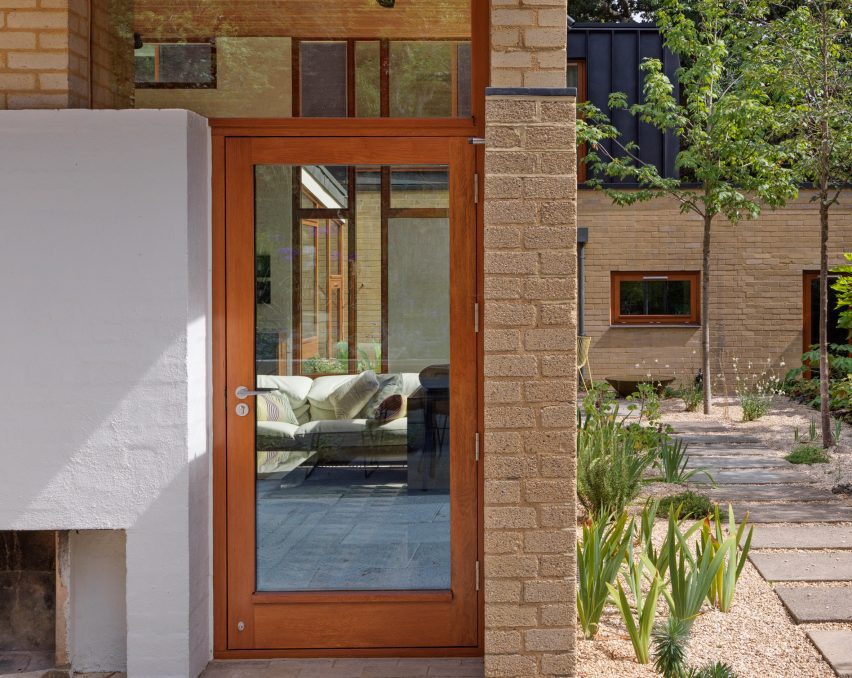
Coppin Dockray is a London studio founded in 2012 by Coppin with Bev Dockray. Hampstead House is the latest in a series of architecturally significant modernist houses that it has had a hand in restoring to their former glory.
"We are curious about buildings, especially these exceptional post-war houses and we spend much time trying to understand them as best we can," said Coppin.
Its previous projects include a renovation of a modernist house by the Danish architect Jørn Utzon, and a house called Ansty Plum, which was built in 1962 by architect David Levitt and featured a studio designed by Alison and Peter Smithson.
The photography is by James O Davies unless stated otherwise.